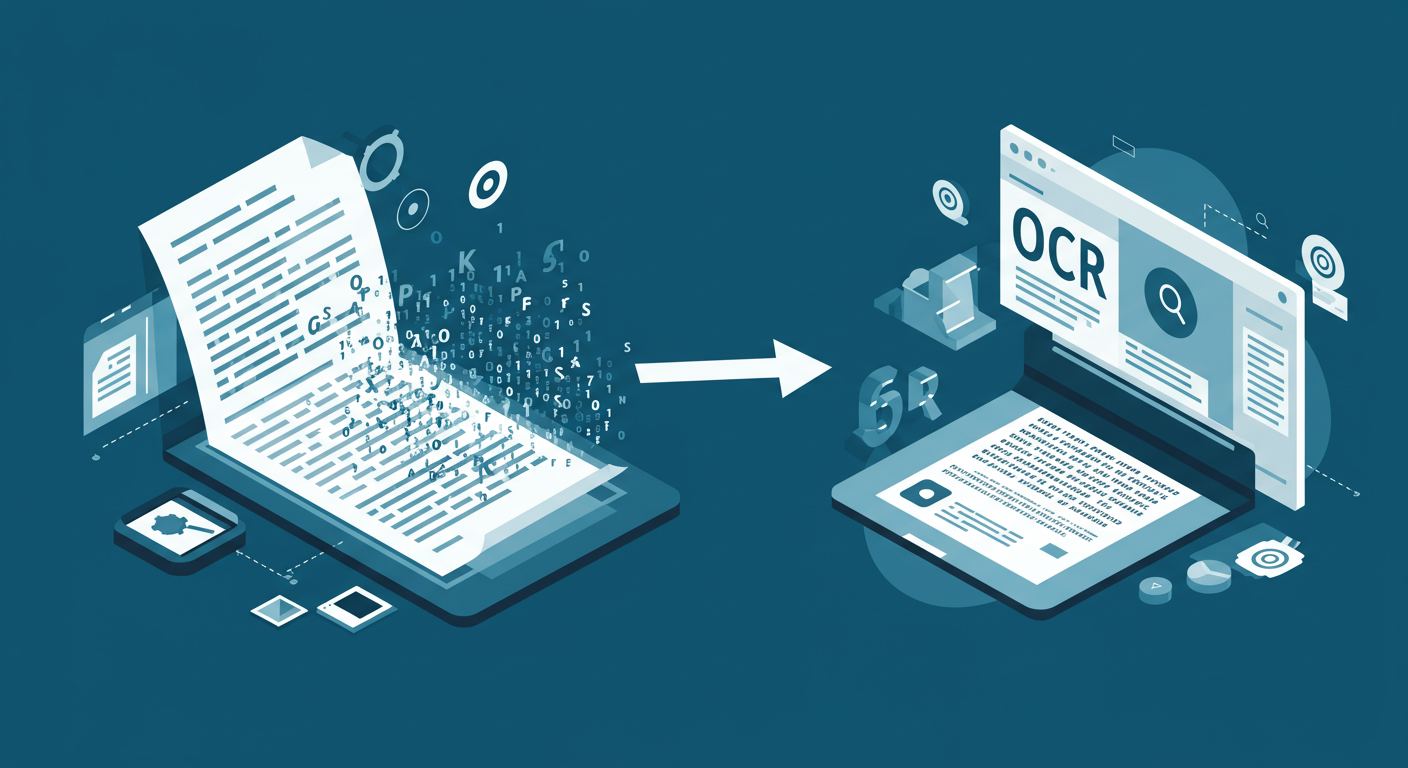What is Optical Character Recognition (OCR)?
Optical Character Recognition (OCR) is a technology that converts printed or handwritten text from images, scanned documents, or photos into machine-readable text. By transforming physical documents into digital files, OCR eliminates the need for manual data entry, enabling faster and more efficient processing of textual information. OCR plays a critical role in digitizing documents, improving business workflows, and enhancing accessibility to text-based data.

How Does OCR Work?
OCR works through a series of processes that allow machines to recognize and extract text from images. These steps are designed to turn a physical document into an editable digital format that can be easily analyzed or searched.
1. Image Acquisition
The OCR process begins with the acquisition of the document. This is typically done by scanning a paper document or using a camera to capture an image of text. The OCR engine then processes this image to identify and isolate the text.
2. Preprocessing
Once the image is acquired, it undergoes preprocessing to enhance its quality. This step includes removing noise, correcting skewed images, and improving the clarity of the text. By ensuring the document is as clear as possible, OCR systems can accurately extract characters for recognition.
3. Text Detection and Character Recognition
OCR algorithms then detect the regions containing text within the image and begin character recognition. Using pattern recognition or feature extraction techniques, the software identifies individual characters, numbers, and symbols. Modern OCR systems often use deep learning models and machine learning to improve recognition accuracy, even with challenging fonts or handwriting.
4. Output and Postprocessing
After the text is recognized, the system converts it into a machine-readable format such as plain text, PDF, or Word documents. Postprocessing may involve formatting adjustments or spell checks to improve the quality of the recognized text. The final output can be further edited, searched, and analyzed as needed.
Types of OCR
OCR technology can be classified into different types based on its level of sophistication and its specific applications.
Simple OCR
Simple OCR systems rely on pattern matching and are designed to work with specific fonts and text types. These systems are typically used for tasks involving printed documents with standardized fonts and layouts.
Intelligent Character Recognition (ICR)
ICR enhances traditional OCR by incorporating machine learning to recognize handwritten text. This technology enables OCR systems to “learn” from the data, improving their accuracy over time. ICR is especially useful in situations where handwritten documents need to be converted into digital formats.
Intelligent Word Recognition (IWR)
An advanced form of ICR, IWR focuses on recognizing entire words rather than individual characters. This technique can significantly speed up the OCR process and increase accuracy, especially for languages or text types that follow predictable patterns.
Benefits of OCR
Optical Character Recognition offers several benefits that make it a valuable tool for businesses and individuals alike.
- Increased Efficiency: OCR automates the conversion of text from physical documents into digital formats, eliminating the need for manual data entry.
- Cost Savings: By digitizing paper-based records, OCR reduces the costs associated with physical storage, document retrieval, and manual labor.
- Improved Accuracy: OCR technology minimizes human error by providing precise text recognition and eliminating the inconsistencies associated with manual data entry.
- Accessibility: OCR enhances accessibility for individuals with visual impairments by converting printed materials into text that can be read aloud using screen readers.
Use Cases for OCR
OCR is a versatile technology with applications across various industries, including:
- Document Digitization: OCR is commonly used to convert printed documents, such as books, invoices, contracts, and receipts, into editable, searchable digital formats.
- Data Entry Automation: OCR helps automate data entry tasks by extracting information from forms, invoices, and other documents.
- Healthcare: OCR is used in healthcare to digitize patient records, medical forms, and insurance claims.
- Banking and Finance: In banking, OCR enables the automatic processing of checks, loan documents, and financial statements, improving accuracy and speeding up transactions.
Optical Character Recognition (OCR) is a transformative technology that has revolutionized document management, data entry, and accessibility. By converting printed or handwritten text into digital formats, OCR improves efficiency, reduces costs, and enhances data accuracy. With ongoing advancements, OCR is becoming an even more powerful tool for automating processes and improving business operations across industries.